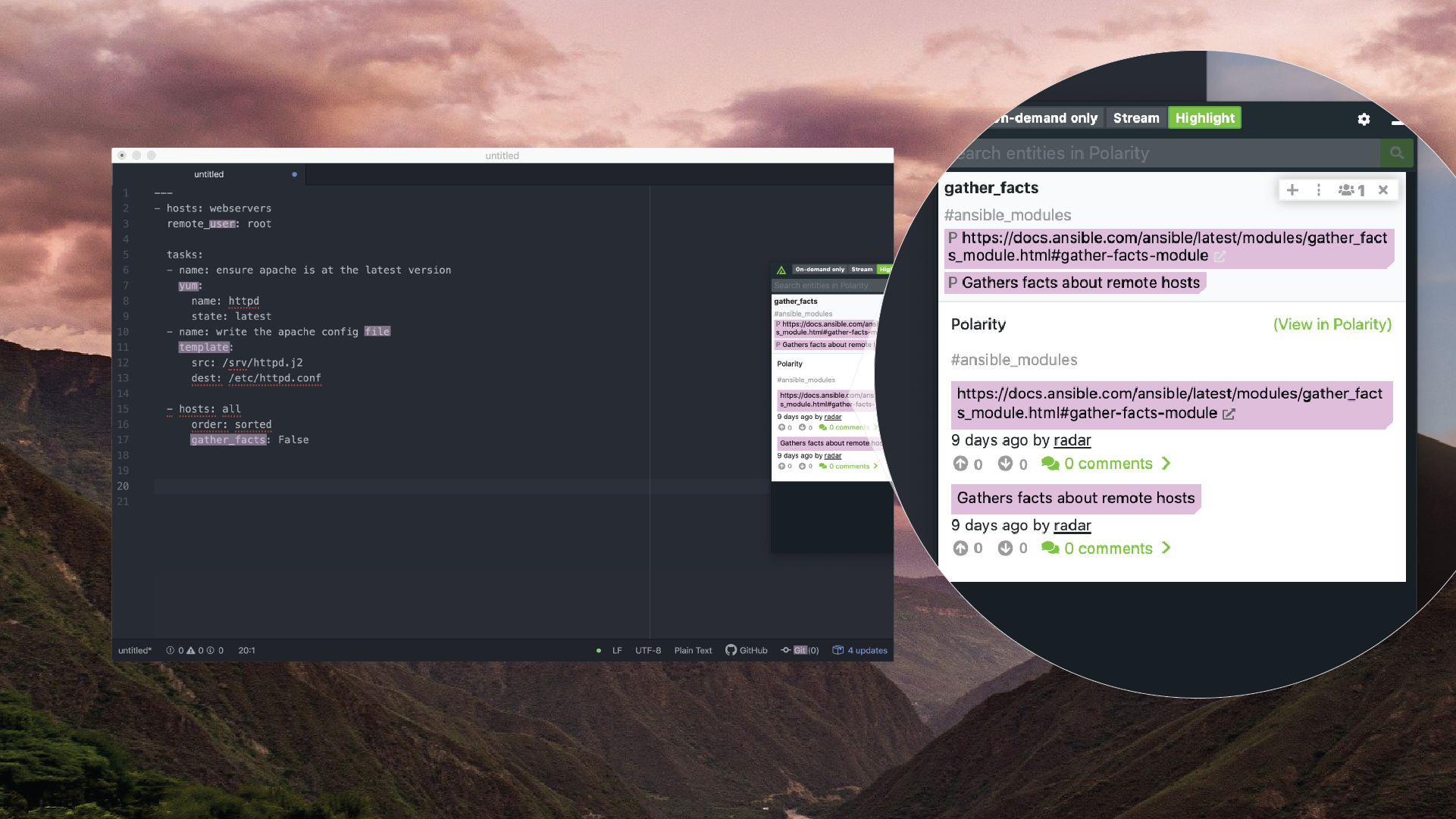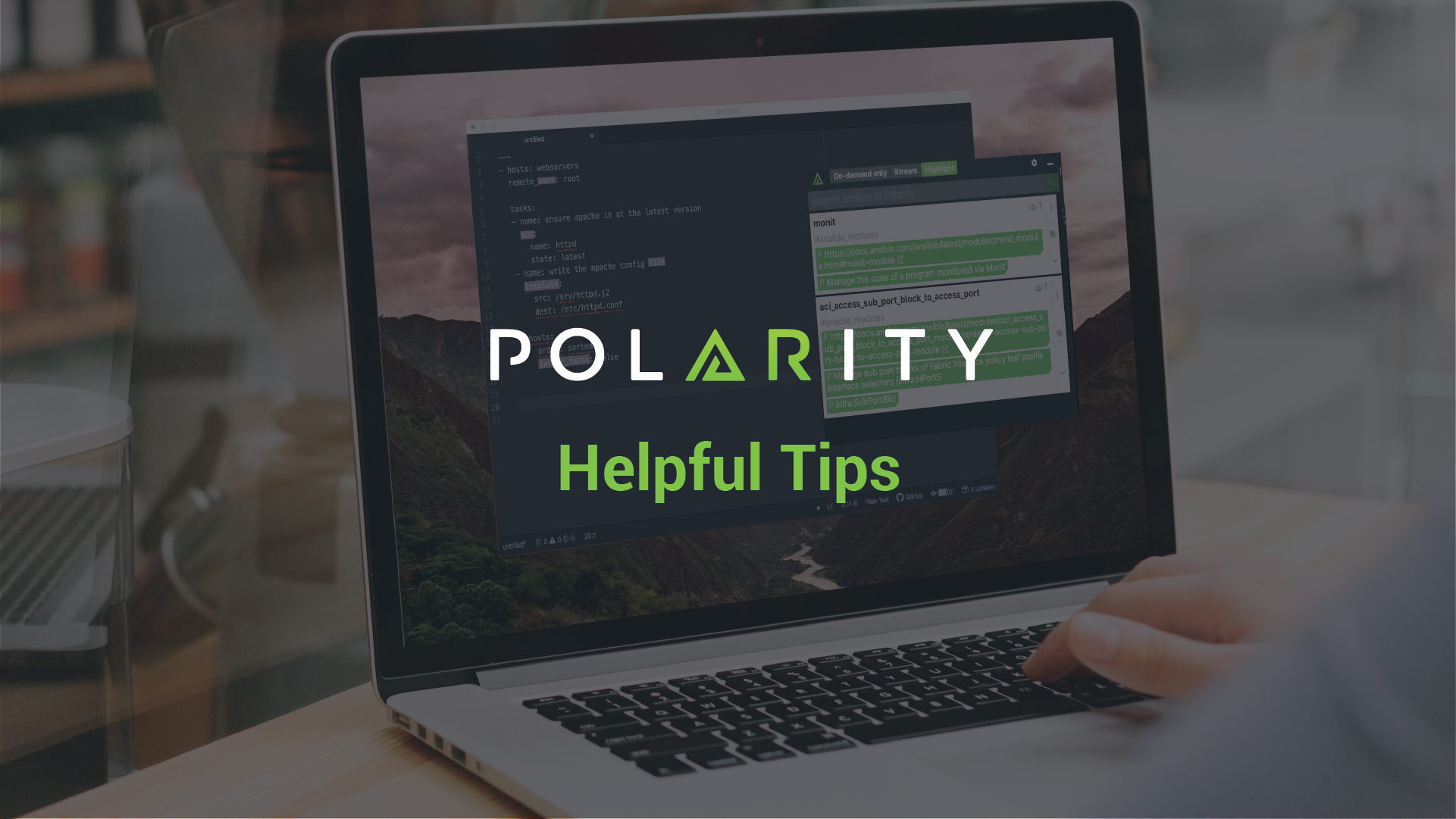Posted
Today’s post continues an ongoing series on Polarity User Tips. Data tells a story, Polarity helps you see it with Augmented Reality overlaying contextual information as you work, giving you the right data at the right time to make informed decisions and take action with speed (no glasses or goggles required). This guide explains how you can see the story in your data with Polarity using the Ansible Modules Reference Channel.
Intro to Polarity Reference Channels
Polarity Channels are a way to organize Entities and Annotations into logical groups, such as all of your assets or your LinkedIn contacts.
Reference channels are a Polarity Channel that is based on another source of information that is used just for reference purposes by Polarity Users. Reference channels can be anything from a list of internal or external threats to a list of assets.
Where to find Reference Channels
On the Polarity Github page, download the Ansible Modules reference channel or browse our library of reference channels for better data awareness and recall.
What are Ansible Modules?
Ansible is a scripting language that is used for server-side automation and configuration management. It is widely used in many different organizations by network engineers to security professionals. Within the language, there are multiple modules that engineers can use to speed up development.
Ansible Modules Reference Channels in Polarity
The Ansible Modules Reference channel allows you to easily reference any other modules that have been certified by Ansible. Whenever there is a referenceable module on your screen, the Ansible Modules Reference channel will provide you an overview of that module and a link to the module within Ansible.
For example, when the user sees a module name on-screen, like gather_facts in the image below, they will be able to see what that module does and link out to the documentation on the module.

In this image, notice the highlighted gather_facts module on the left. You can see that Polarity’s computer vision recognizes the text on screen, and in real-time while the analyst is working, it has provided contextual information from the Ansible Modules Reference Channel in the overlay window on the right.
